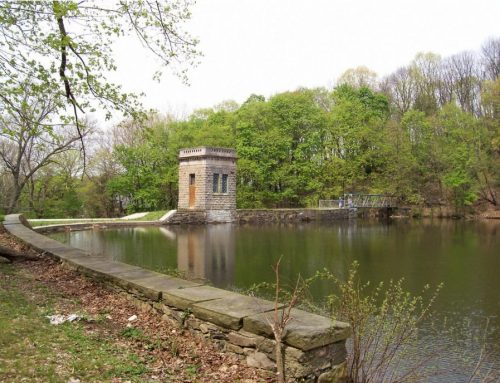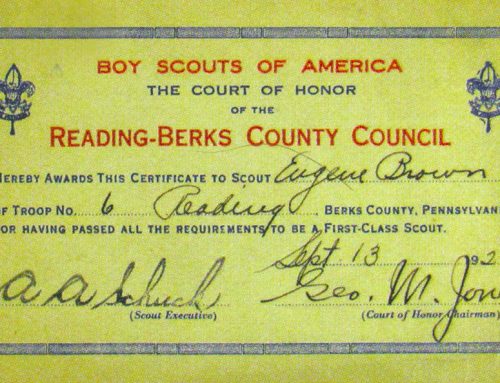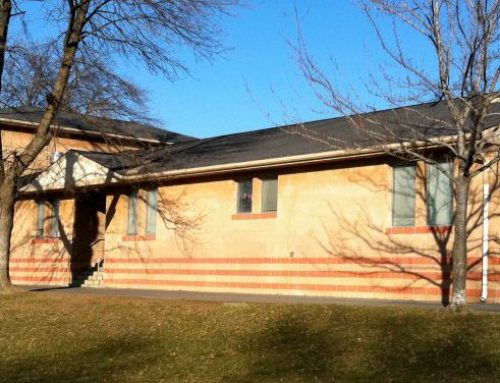In 1966, the Reading Automobile Club proposed the construction of a scenic drive on top of Neversink Mountain.

Although Reading does have one scenic road – Skyline Drive atop Mt. Penn – in a letter to county commissioners, John S. Giles, Reading Automobile Club president, said the development of a new mountaintop scenic drive would give Reading an attraction “which could not be compared with any similar road in our country.”
The scenic drive envisioned by Giles would have connected on the east with Route 422 and on the west with the West Shore Bypass at a point where a new bridge across the Schuylkill River was contemplated at the foot of 5th or 6th streets.
Emphasizing that cities throughout the United States were trying to dream up attractions to bring in tourist dollars, Giles said: “Here we have another natural attraction just waiting to be developed as a scenic asset.” He pointed out that the roadbed of the Neversink Railway might prove a feasible start for a Neversink scenic highway.
The roadbed brings to mind that the period of Neversink’s tourist glory began in 1890 when the Neversink Mountain Electric Railroad opened. In some years as many as 120,000 people rode the cars around the mountain and stopped at resorts and sightseeing spots.
Below: Neversink Mountain Electric Railroad.

The trolley line made Neversink popular not only here but throughout the East. Along its route were such place as Klapperthal Pavilion, the Glen Hotel, the Neversink Mountain Hotel, Moses Graefrs Centennial Hotel, Lover’s Leap, Point Lookout and Observation Curve. Other nearby places that could be reached by walking were the Woodvale Inn, Heiner’s Whistle and Hawk’s Cave.

It was an eight-mile run around Neversink Mountain, although a “short-route” transfer could be made by those who wanted to reach or come home from Klapperthal quickly. It was the third mountain railroad in America powered by electricity, and the first operated by electric generated by water.
From Point Lookout one could see five counties – Berks, Montgomery, Chester, Lebanon and Lancaster. From the other side of the mountain, Schuylkill, Dauphin and Northampton counties could be seen.
Just beyond Point Lookout the cars passed over to the northern slope. Here was the Highland House.
On the north side of the mountain, a panoramic vista of Reading opens from a natural clearing in the trees. The city’s bustle doesn’t travel this far.
This trolley line shut down in September 1917, and did not reopen in 1918 as America fought in World War I. By that time Berks Countians were using automobiles rather than trolleys. A mountain ride was “old stuff” to motorists who drove out into the country to a multitude of new places for picnics, dances and other diversions.
A century ago, Neversink Mountain was teeming with civilization. But nature has taken over what man built.
Since 1974 Neversink Mountain has remained relatively quiet, and so far at least, free of large-scale development. Currently, Neversink is a patchwork of public and private land. The Berks County Conservancy owns nearly 500-acres of Nerversink that connects trails from one end of the mountain to the other. The rest is privately owned. The Berks County Conservancy continues to invest much time and resources to ensure that the 900-acre Nerversink Mountain remains an open space for the benefit of the city residents that visit the mountain for the enjoyment of future generations.
Neversink does not get the same attention as Mount Penn, which is home to the Pagoda and the famed Duryea and Skyline drives. Despite the conservancy’s attempt to advertise it, few realize that Neversink is open to the public for hiking.






Leave A Comment